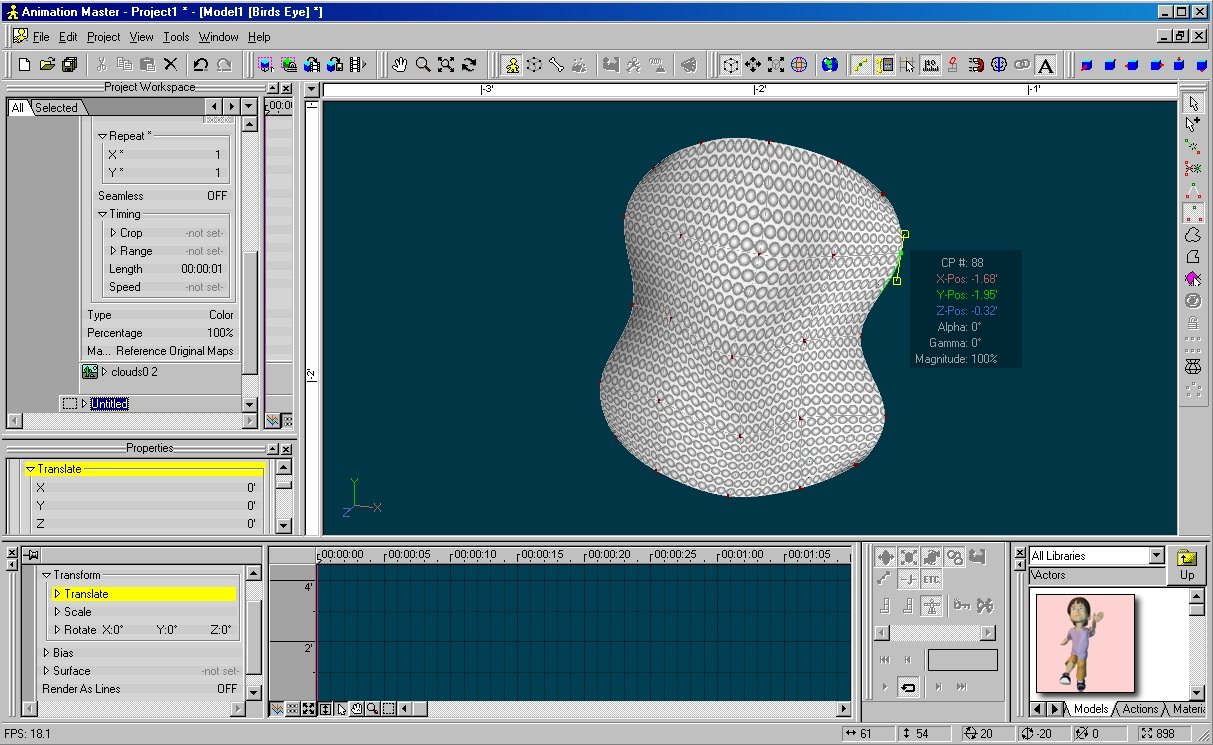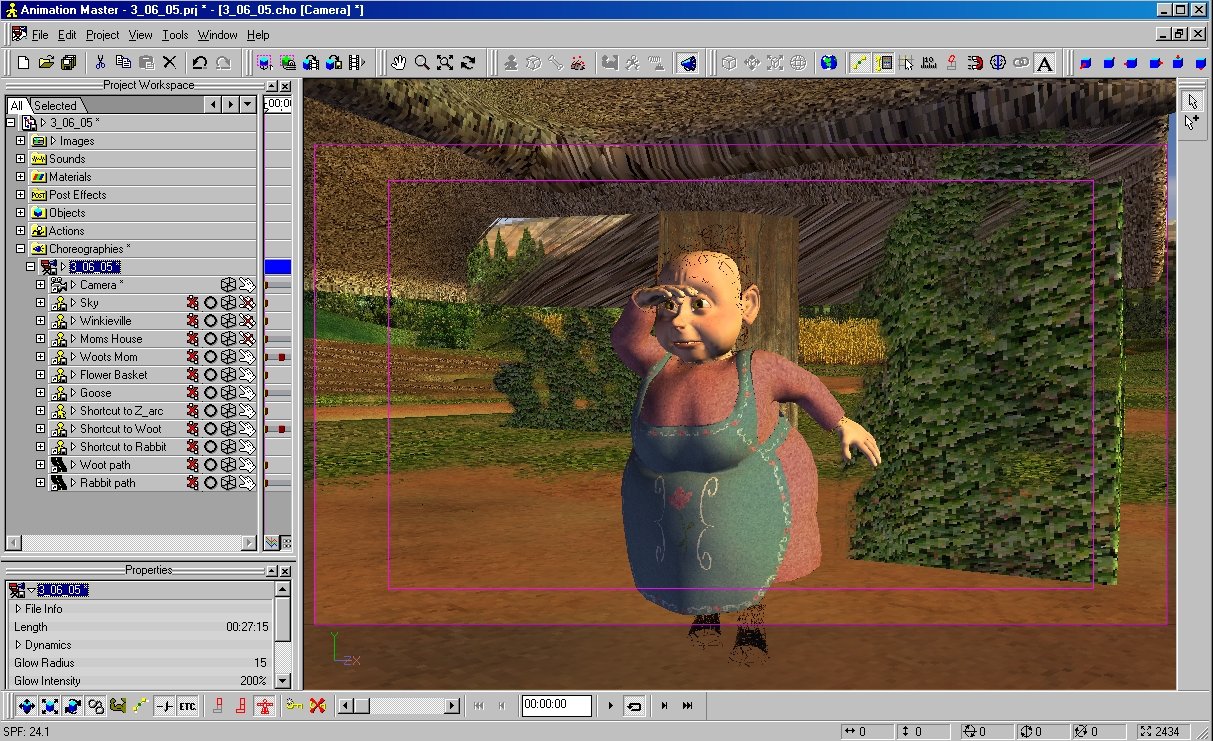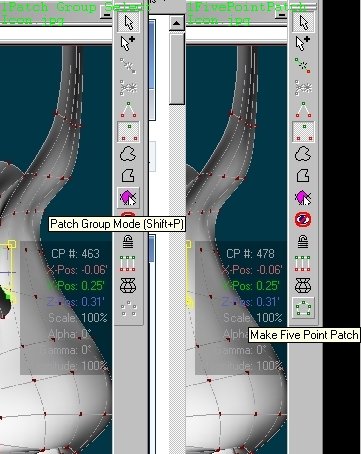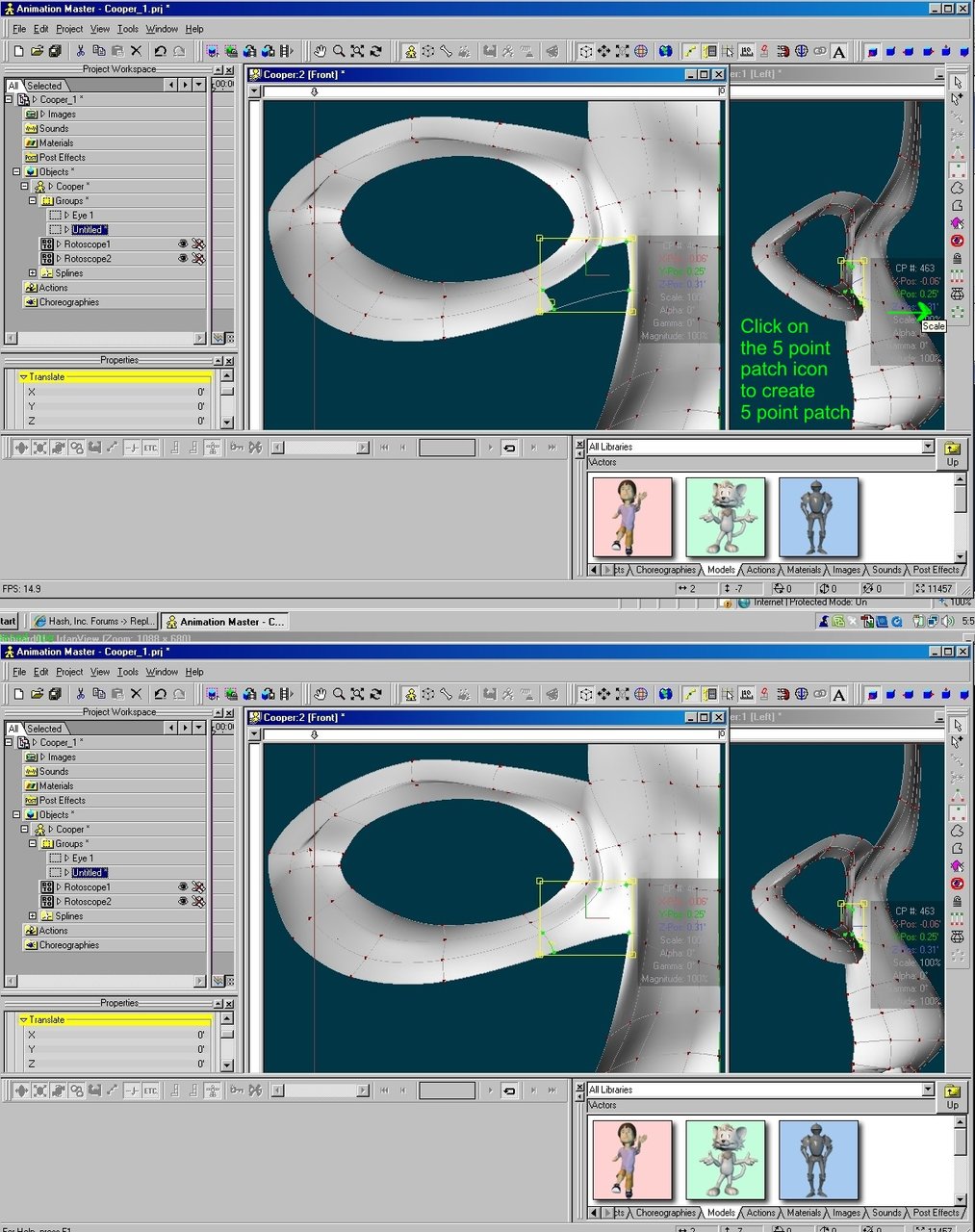-
Posts
21,597 -
Joined
-
Last visited
-
Days Won
110
Content Type
Profiles
Forums
Events
Everything posted by Rodney
-
Much respect goes out to Anzovin for not only keeping TSM2 in circulation but for going the extra mile and letting us have the power of TSM for free. Resources like TSM need to be kept in circulation. I agree that a Paypal button would be a nice thing for Anzovin to add to their site but I wouldn't want that to detract from the generosity and good will they've shown with this gesture to the A:M Community. Perhaps there is a different way to say thanks? I would suggest that rather than a donation anyone who finds TSM2 of use should purchase some or all of Anzovin's Training CDs. This is a win-win situation for everyone that sends a clear message of support to Anzovin and lets them know we are still very interested in their products both past and future. Anzovin would sell more Training CDs and you would be the recipient of information needed to increase your skill with A:M. If you already have the Training CDs perhaps you might consider purchasing them for a friend? This in turn would help the A:M Community continue to grow and prosper. Growth and prosperity isn't free but takes time and investment. I hope Anzovin will see a nice return on the investment they have made here by releasing TSM2 to the A:M Community. See Anzovin's announcment of discontinuing the A:M Training CDs to see why this suggest is no longer an option. Thanks Anzovin for releasing TSM2!
-
One of the classic techniques to handling a dive/spin is to create and animate a Null object that has the character constrained to the Null. If you have Jeff Lew's Training DVD he covers it there. (Not diving but center of mass and character spinning in the air) The idea is to move and rotate the Null to account for the center of balance (which as Robert states is not the center of the character but the center of mass of the character) and movement of weight and then animate the character's arms legs... everything else... separately. Separating this out you should be able to address the twinning Rusty mentions more easily. I'm running a search on 'diving board' videos on the internet but 'tis locking up on me at the moment. Edit: There are quite a few on youtube. .
-
I've been meaning to do a seamless tile tutorial for A:M for years now. If I'm not misunderstanding that might address the effect you are looking for. One thing you can do would be to limit the number of clouds in your image to one... then adjust the 'repeat' value on the image to add clouds. The images can be patch images applied to a mesh, decals applied to a plane... rotoscopes... whatever. For ease in manipulating the shape of the image I'd suggest using a grid and modifying it in an Action. That way your original shape is maintained in the model. You can play with multiple levels of images with/without alpha channels, adjust transparency... too many options to mention here. The attached image is just a basic patch image on a grid. Again... not sure what you are looking for here but offering it just the same.
-
Ah yes! Very well done too! ...and they aren't from 1 to 150 are they... I'm so forgetful. Still... post them here for completeness sake. Pretty please!
-
What Robert said. As I recall you (Robert) were one of the champions, if not the primary champion, of keeping the PWS timeline (what I call the Channel Editor). I've grown more use to using the Timeline these days but there are times when I find I prefer to use the PWS timeline almost exclusively. I'm not sure I favor one over the other... I like to use them both. I've yet to really get set up again after my recent move but hope to be there soon. Its been entirely too long since I've worked on any project short of small tests in A:M. Little things like optimizing windows/screens for better playback can make a big difference in workflow so I'm enjoying the discussion.
-
Just to be clear as there is often confusion between the Timeline and Channel Editor (apologies if I have it wrong!)... In the attached image the Timeline is turned off entirely. The Channel Editor to the right of the Project Workspace (PWS) cannot be turned off. It can only be hidden. If it is showing --even a sliver-- A:M reads... updates... maintains... the Channel Editor data which requires computation/processing. The only way to tell A:M to free that up is to hide the Channel Editor window. During TWO production the idea of discontinuing the Channel Editor was considered as the Timeline can provide this functionality. As I recall the decision was that the Channel Editor is too essential a feature to users to abandoned but... consider why discontinuing it was considered! Most of us don't think about hiding the Channel Editor. We just use what is there. Note that I cannot recall whether Hash Inc made changes to the Channel Editor based on this finding. They may have. (all this for what its worth and for further clarification of my suggestion)
-
Exercise 6: Custom Car in the manual (TaoA:M) has an introduction to Distortion Cages. Thats a good introduction to the process of deformation in Modeling. I suggest reviewing that first and then applying what you learn to animated distortion cages. From there you can do much of the same modification in an Action which will provide the Animated Distortion Cages you are looking for. Interestingly enough Holmes Bryant has created two tutorials on this very subject. Don't forget to look in the Tutorials forum or run a search in the forum for key words. Thanks for the tutorials Holmes! Modeling with Distortion Cages Animated Distortion Cages
-
I haven't seen this one mentioned yet so will offer it. Martin Hash was the first to identify the issue here in the forum Hide your Channel Window if you aren't using it (thats the timeline-like area/dopeheet to the right of your Project Workspace for those that don't know). A:M reportedly can be slowed down considerably as it has to update if its in view. The memory hit should be more if animating or modeling but might slow playback down as well.
-
I like. Someone else here already modeled the 'unknown' characters. I think the topic was called 'unnown' or something similar. Think... think... Who was it... Kamikaze? Hope others join in or you are going to be working through the rest of the 150 for the better part of the year! Maybe you could work out some kind of trading system to reward others who join in and help make the rest by sharing the models? Very nice Mewtwo.
-
I think to a very good degree this illustrates why animators adopted 'Squash and Stretch' and 'Exaggeration' as fundamentals with regard to animated bodies. This is no doubt why more cartoons have been used than realistic humans over the years. You can get away with more with squash and stretch in imaginary characters. Vern hits on an excellent point with the camera's view/perspective. For some poses we may need to break the model's rig in order to get the proper effect of foreshortening. We may often find poses where 'reality' doesn't look right or where something not filmed realistically looks somehow... better. I think this is why I am attracted to the cartoon form over more realistic rendering/porportions. In its own way the exaggeration makes a lot more sense to my brain... with stylized exaggeration I immediately accept that what I'm seeing is 'real enough' and I suspend my belief and move forward into the story. Going too realistic reminds the brain that what it is seeing is created with a computer and that can break the storyteller's spell. The roto you've placed next to the character has considerable exaggeration however even for a line drawing. That first one has very 'superheroic' porportions. In order to get closer to that (I think) you would have to break with realism. (go with the flow.., chart your own course... break the mould) From what I've seen of your characters thus far I can see you've strived to reach a good degree of realism in your work and I'd say you've achieved considerable success there. Keep it up!
-
For anyone following along... Myron was not clicking on the right button/icon. It looks like he was clicking the 'Patch select' icon instead. Read the play by play (and more useful advise!) here: http://www.hash.com/forums/index.php?showt...mp;#entry272118 As newbies (and oldersters too!) we not only learn from our own mistakes but also from the mistakes of others.
-
Myron, The 5 point patch looks fine from here. Perhaps you just aren't activating it? By this I mean to say that once the 5 point patch icon activates (which you've indicated has happened) that is showing you that its a valid 5 point patch. Then just click the 5 point patch icon and WALAH! the patch will be created. Looks like you are off to a great start!
-
Hey Matt! From one military guy to another... I want to welcome you to the A:M Forum! I know exactly what you mean when you talk about circumstances in Iraq that prevent downloading... been there... done that! I was fortunate enough that I eventually got a reliable connection but it cost me plenty to get it done. Worst of all was the time it took to download anything... with the connection constantly timing out. Ah the memories... I must say... your relative has great taste in software. Since you don't have a good connection I'll suggest that even more than for most people this is a great time to take advantage of that manual. Work through it and take notes along the way. When you do finally get some connectivity download the video tutorials that go with the exercises and then go through the exercises again. You'll be amazed at what you find you've learned (and remembered) along the way. If your connectivity allows get involved here in the forum. Make a lot of mistakes! Hurry home... and be safe! Hi Myron! I've send a reply to you in your PM inbox but want to officially welcome you here. Welcome to the A:M Forum! The '5 point patch problem' won't be a problem once you get the hang of it. When starting out though I would suggest to simply avoid it altogether but I understand that you'll eventually need to master it. If you must use one then you might want to share either a file or image of what you are experiencing. That'll help us help you get it straight. Without knowing more I can only assume that the area is not valid for the creation of a 5 point patch. Too many variables to consider without a look at the file. Hang in there. We are here with you. Rodney
-
Not to make little of the author of Jpatch or his work here... its a really amazing program... he programs it in his spare time... and its almost all programmed by one guy. But... in my estimation Jpatch is less than 5% of what A:M is with all features and functions factored in. Its really that significant a difference. There really is very little to compare between the two apps besides the common elements that inspired each of the apps creators. Jpatch has a few things that A:M doesn't too of course but that is to be expected... the programs aren't the same. Years ago I wanted to recommend JPatch as a good 'demo' of the technology and workflow of A:M at its core but I find it rather hard to do. The primary comparison might be in pricing. If we could round *free* up to $1 for JPatch we would find A:M to be really really REALLY cheap when comparitively pricing. I do keep my eye on Jpatch from time to time. I'd like to see more programs strive to be as compatible with A:M as Jpatch has been. Unfortunately Jpatch's author has been taking it farther and farther away from A:M over the years. For instance, the new development branch is no longer patch based.
-
Fuchur, My thanks to you for highlighting Marcel Bricman's work. I had started to type about Treez... and BitmapPlus... AM2SWF... etc... and realized my post was not going to do him justice, especially when my point was to resist the call of plugins when first starting out. I knew someone would add his name to this topic though and you did! The problem with giving contributors credit where credit is due here in the A:M Community (this from those at Hash Inc down to the newest contributor) is that it is entirely too much of an impossible thing to do. Hopefully those that have contributed over the years realize just how important that effort is and has been to all of us. My thanks certainly goes out to them.
-
The current release is considerably different than version 9.0. I don't know enough to guess at the functions called by each version but it would not be unlike comparing a program like notepad.exe to Office 2007's MS Word. There really is no reasonable comparison other than they perform some of the same basic functions. The suggestion that has worked for most people: - Update video drivers - Turn off Vista's Aero feature - Disable Desktop extensions Its always possible you have a corrupted installer... but rather unlikely.
-
Nice modeling and render. You are definitely NOT wasting your time. You could go the route of particle hair but I think your best bet may be to use images. Frank Silas use to have perhaps the definitive tutorial on that method but he no longer maintains those resources. If you have access to the Extra DVD it may be there. I'll look for a similar resource but the idea is to use a series of layered meshes all decaled with strands of hair. The hair image has an alpha channel that allows the lower levels to show through. Of course a mix of decaled hair and particle hair would probably look even better. For those not familiar with the reference dailan dropped you'll want to check out Matthew Krickets's tutorials. He hits all the basics and beyond from modeling, to rigging to decaling to toon rendering and more. Great stuff! http://dement3d.com/tutorials/
-
Oh yeah. Thats already looking sweet. Very nice Stian.
-
Needs more baby raptors chasing her. I think you've got in mind the areas that come to mind for me. Adding the toe animation (with a noticeable upward push as the raptor lifts off) will help perfect it. I'll suggest adjusting the direction of the raptor slightly to keep it from traveling straight across the screen. The combination of the straight/mostly unbroken horizon line with the movement of the raport makes the scene look 'designed'. I can think of two ways to attack that... redirect the raptor... or add additional environment into the scene. Of the two... redirecting the raptor is easier and might provide a sense of tension if moving closer (attempting to circle?) to the viewer. I'm not trying to redirect your goals here... just wondering out loud. Edit: It occurs to me that the horizontal walk would work really well if this were a seamless panoramic background and the walk cycled all the way around. This would place the viewer right in the middle of a very dangerous situation.
-
Others hopefully will fill in the gaps I miss here... (I see Robcat did just that!) I've not heard of that option being offered before. My reading on that would be that you would have to release your websubscription in favor of the CD or purchase the CD as a separate program. As it stands you'd get the websubscription and CD for $338. Anything less would constitute a discount which only a Hash Inc rep can do. Contact Hash Inc and let them know your needs. There are benefits to both the websubscription and the CD package. As a new user I would take the time to learn what you have. When you exhaust the possibilities (which will be far more than one year!) consider purchasing the CD. The benefits of the CD are many as well but... understand that you can download most of the resources that come with the CD electronically... for free. The books (Tech Reference and TaoA:M Manual) can also be ordered separately in printed form. Enough about that... plugins! There are a lot of plugins available to you. Many are incorporated directly in A:M already. Understand that there is something of a gray area between plugins, utilities and programs. There are quite a few of each out there. Many of them are free. For A:M specific plugins you'll find the most to be found in one place here: http://www.sgross.com/plugins/index.html Steffen Gross is also the author of the Newton Physics plugin which comes with A:M... great fun! There are a whole lot of plugins available for use with A:M but I'll stop there for now. Marcel Bricman is another great source for plugins. Several of his plugins are now incorporated and released with A:M (Treez and Bitmap Plus) Arthur Walasek is known for his Import/Export plugins: http://www.innovateenterprises.com/AM/ For those that wish to hire a plugin created we have a pretty impressive group of programmers and dabblers that may take up the challenge where they have the time and personal interest. It can be a bit costly to program plugins with limited use. An example of one of these is Library Manager which Glenn Anthofer wrote after a request from Rusty Williamson. The program automates building of Libraries for use in A:M. http://www.virtualmediastudios.com/LibraryManager-036.zip As we leave the 'plugin' category we find a variety of utilities and programs available for use with A:M. Some have been designed specifically for use with A:M. In that category you will find A:M Painter/3D Painter. With it you can paint directly on A:M models. http://www.3dpainter.com/ There are also literally thousands upons thousands of programs and utilities avialable on the web that were not designed for use with A:M but can be used with A:M all the same. Having said all this I would recommend staying away from plugins and extra programs as much as you can... especially as you are just starting out. Its far better to concentrate on the basics of modeling and animating in A:M. For that I recommend taking the plunge and working through the manual; TaoA:M. As you master the basics you can supplement and expand upon that with other plugins, utilities and programs. Good luck!
-
Looking great thus far! Can I borrow some of your patience? I'm learning a lot from all those who have been posting their detailed work here in the forum. Yours is no different. Thats a mighty fine ride.
-
Thanks for posting that mini-tutorial. I reminds me of the ol' classic 'make a window' tutorial by Jeff Cantin. Okay... correct me where I'm wrong here... It appears for the staggered windows along the stairwell you continued with this idea but adjusted the adjacent windows vertically. I'm sure I'm oversimplifying that a bit... I'm not trying to distract you from your work but I'm always interested in the process. You have a pretty good level of detail for the simplicity in splines. Do you have a current patch count you can share with us?
-
The following information, taken from the New Users page linked often here in the forum, is a bit out of date: The good news is that the error there is in our favor. The annual subscription is no longer $99... its $49! The websubscription without the CD is a new thing as of 2008. The websubscription saves the average A:M user $50 plus postage and handing every year and you get the same full featured program delivered electronically.
-
Heck yeah I'm interested! I'm sure others will be interested as well.
-
We are here learning with you! Wecome to the A:M Forum.













